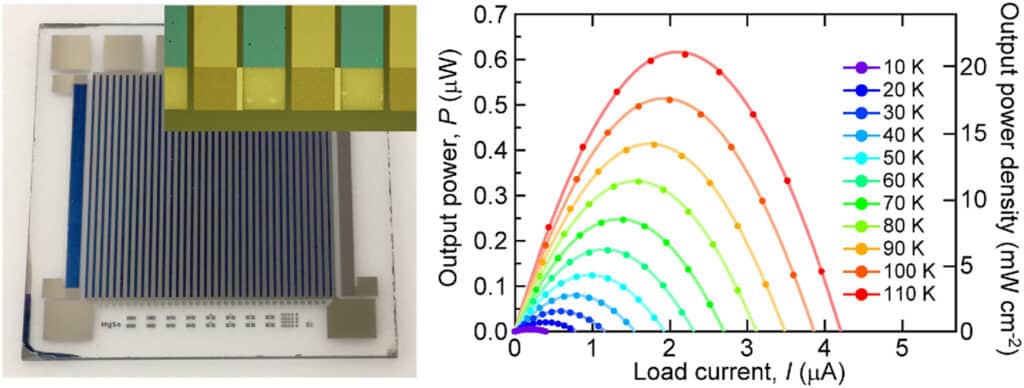
(Credit: ScienceDirect, Isao Ohkubo et. al.)
A team of researchers at the National Institute for Materials Science (NIMS), National Institute of Advanced Industrial Science and Technology (AIST), and the University of Tsukuba are working on a new approach to miniaturise a thermoelectric generator so that it can pave the way for powering devices based on Internet of Things (IoT). “The direct conversion of heat into electricity via thermoelectric materials is a promising energy harvesting technology,” according to researchers. “In particular, as an ideal microscale onboard power source for self-powered electronics, possible miniaturized thermoelectric devices are attracting attention for applications involving the effective use of the thermal energy generated from unusually high heat density during the operation of electronic devices and systems,” they added.
The main issue with such generators is the smaller generators, tiny enough to be integrated into electronic devices usually harvest a little too less energy to be of use, while the generators which can harvest the relevant amounts of energy are too massive to be integrated. A generator that can tick all of the aforementioned boxes, and is tiny and efficient is too tiresome and complicated to manufacture in bulk. “Almost all modern high-performance thermoelectric materials are incompatible with CMOS [Complementary Metal-Oxide Semiconductor] processes or MEMS [Microelectromechanical Systems] technologies,” explained the team of researchers. “In this study, we focus on the development of miniaturized thermoelectric devices based on modern thermoelectric materials by using standard microfabrication techniques based on photolithography and dry-etching processes,” they added.
“The successful demonstration of a microfabricated thin-film-based thermoelectric device paves the way toward novel thermoelectric applications for self-powered Internet of Things devices and systems,” concluded the team. “as well as applications involving the effective use of the waste thermal energy generated from high heat density during the operation of electronic devices and systems,” they added.
The resultant product is a reliable thermoelectric generator capable of the output power of 0.6μW at 0.58V, which is comparable to an output power density of 21mW/cm⁻². Although it is still not enough and insufficient, it is a step in the right direction.
The study can be read here.






